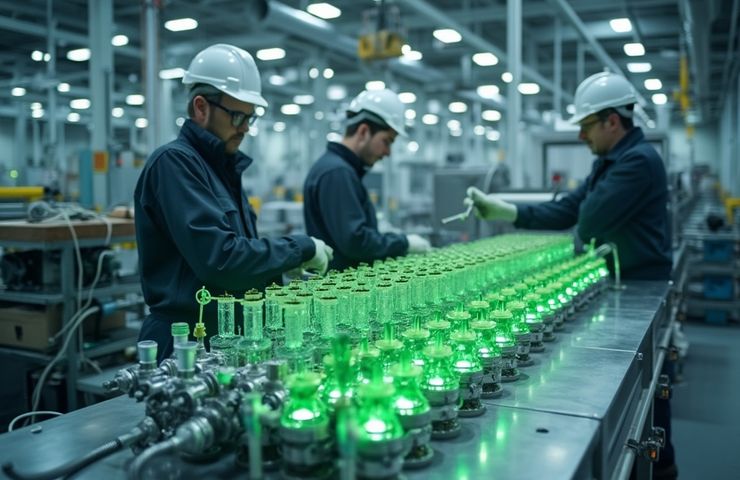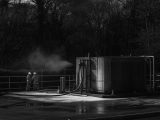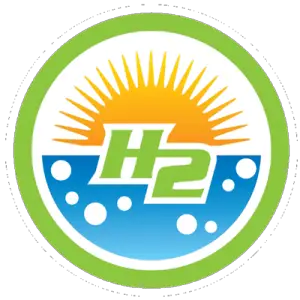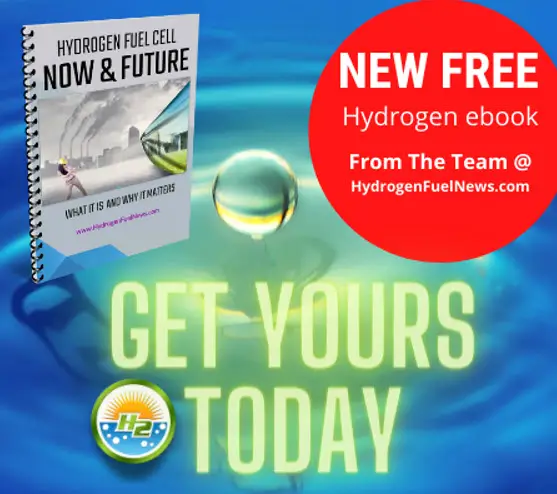
Ecolectro and Re:Build Fast-Track AEM Electrolysis for Green Hydrogen in US
May 9, 2025US Teams Up for Homegrown Hydrogen Tech
Ecolectro and Re:Build Manufacturing are shaking things up in the world of green hydrogen. The two companies just teamed up to tackle a tough challenge—scaling AEM electrolysis right here in the U.S., quickly and cost-effectively. Their goal? Make anion exchange membrane (AEM) electrolyzers affordable, scalable, and made in the USA.
Cutting Through the Noise
Forget your typical corporate partnership with vague promises. This one’s got teeth. Ecolectro brings breakthrough alkaline exchange membranes to the table, and Re:Build is packing serious manufacturing firepower. Together, they’re aiming to break open the U.S. green hydrogen market—starting where the groundwork is already laid: California, the Gulf Coast, and the Northeast.
Why This Matters
If they pull this off, it could be a huge win for the Department of Energy’s Hydrogen Shot initiative—you know, that ambitious plan to bring hydrogen down to $1 per kilogram. This shift away from expensive, precious-metal PEM systems toward more cost-friendly, nickel-and-iron-based AEM stacks could slash capital costs by over 40% by 2027.
Translation? Cheaper parts, made at home, ready to line up with renewable energy variability. It’s about building a hydrogen infrastructure that’s not only cost-effective and reliable—but also firmly planted on U.S. soil.
The AEM Advantage
Let’s geek out for a second. AEM electrolysis sits nicely between traditional alkaline (cheap but clunky) and PEM (slick but pricey) systems. Running at 50–80°C with up to 75% efficiency, AEM units dodge the need for expensive platinum and instead rely on good ol’ nickel and iron. Less gold, more guts.
So, why now? Well, back in 2021, Ecolectro hit a key milestone: 2,000 hours of membrane durability. That’s big. Add to that a slice of a $58 million DOE grant in 2023 aimed at advancing AEM R&D, and you’ve got a tech that isn’t just theory anymore—it’s getting real.
Re:Build’s Role: More Than Just Muscle
Re:Build isn’t just showing up with a wrench and a factory floor. They’ve been busy acquiring high-precision manufacturing firms—think robotics, automation, AI-driven production. Their mission? Reinvent how climate tech is built from the ground up.
This is about fully integrated electrolyzer systems that are modular, fast to produce, and ready to ship where demand is heating up—which, judging by plans for over 100 new U.S. hydrogen refueling stations by 2026, is looking like just about everywhere.
Setting the Stage
Zooming out a bit, PEM tech is still the leader—it’s proven, it works, but it leans heavily on supply chains in Europe and Asia. The U.S. government doesn’t love that. Enter the Clean Hydrogen Strategy, with $9.5 billion on the table for clean hydrogen hubs. Between that, the H2@Scale initiative, and generous tax breaks from the Inflation Reduction Act, the stars are aligning for a homegrown solution.
If Ecolectro and Re:Build play their cards right, the U.S. gets a domestic alternative that’s built for cost, scale, and jobs. If they miss their shot? Well, it joins the long list of “almost-had-its.”
The Bottom Line
Let’s be real: if hydrogen wants to be more than just a niche player for storage or long-haul fleets, electrolyzers need to get way cheaper—and fast. PEM tech won’t cut it. But AEM electrolysis? That could be the game-changer. This partnership might just push the tech from lab bench to factory floor.
The big question? Can they scale it up, make it affordable, and do it all before the overseas giants corner the market? This isn’t just about tech. It’s about timing, supply chains, and execution.
A Final Thought
Keep an eye on this one. It might seem like a quiet start—but five years from now, you’ll either be hearing about this alliance as the spark that lit a homegrown hydrogen infrastructure revolution, or reading about it in a post-mortem article titled “What Could’ve Been.”



 With over 15 years of reporting hydrogen news, we are your premier source for the latest updates and insights in hydrogen and renewable energy.
With over 15 years of reporting hydrogen news, we are your premier source for the latest updates and insights in hydrogen and renewable energy.